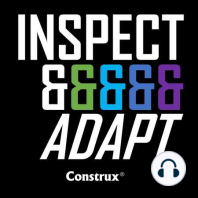34 min listen

#27 More Effective Kanban, Part 3: Kanban for Portfolios and Programs
#27 More Effective Kanban, Part 3: Kanban for Portfolios and Programs
ratings:
Length:
39 minutes
Released:
May 3, 2021
Format:
Podcast episode
Description
Construx VP of Consulting Jenny Stuart and Mark Griffin cleared up common misconceptions about Kanban in Episode #19. In Episode #24, they discussed numerous best practices for establishing and optimizing your Kanban system. Here, they focus on seeing the big picture—working with Kanban at higher levels of workflow. Topics included setting up program-level and portfolio-level Kanban boards. Jenny shares various approaches she's used with clients to determine work items, model the workflow, define exit criteria, and establish WIP limits at the program level, a much higher level of abstraction than user stories. Also discussed are Kanban in the context of SAFe and two-tier Kanban boards, which illustrate multiple levels of abstraction or types of work on one board: epics and features at one level and user stories or children stories underneath.
Released:
May 3, 2021
Format:
Podcast episode
Titles in the series (48)
#2 Getting Unstuck: Addressing Struggling Scrum Adoptions, Responding to the Agile Test, and Properly Sizing Backlog Items by Inspect and Adapt